••• Monkey Business Images Ltd/Valueline/Getty Images
Updated August 07, 2017
By Kurt Schanaman
Tractor tires require a specified amount of air pressure to be maintained at all times for proper operation of the machines. This air pressure is measured in pounds per square inch, or PSI. The required PSI is imprinted into the rubber of the tires near the bead, where the tire meets the metal rim of the wheel. The imprinted information may list a minimum acceptable operating pressure and a maximum (recommended) tire pressure. The air pressure should be maintained according to this information.
Remove the valve stem cap from the tire valve. Press the round end of a tire pressure gauge firmly down onto the nozzle. Read the gauge and make note of the current tire pressure indicated, in PSI.
Read the minimum/maximum tire pressure information imprinted on the tire. Compare the printed tractor tire information with the current tire pressure reading obtained from the tire gauge.
Start the air compressor. Allow it to build maximum tank pressure, at which time the compressor motor will automatically turn off. Press the compressor fill valve firmly over the valve stem nozzle of the tractor tire. Let air enter the tire for 10 to 15 seconds. Remove the compressor fill valve from the tire's valve stem nozzle. Test the tractor tire's air pressure again with the air pressure gauge. Fill the tire with air in cycles of 10 to 15 seconds until the tractor tire pressure falls between the recommended operating tire pressure.
Remove the air compressor nozzle from the tractor tire valve stem when the compressor motor kicks on. This allows the compressor to reach full pressure again before continuing to fill the tire to the necessary pressure.
Don't fill a tractor tire to its maximum rated tire pressure if the tractor will be used on hot summer days. The high heat of the soil being worked with the tractor can cause the internal tire air pressure to expand. If the tire is filled to maximum, the tire may rupture. During summer months, keep the tractor tire pressure about 10 PSI below the maximum to allow room for air to expand. In the winter, keep the tire filled to maximum, because internal air tends to contract in cold weather, risking underfilled tires and damage.
The high heat of the soil being worked with the tractor can cause the internal tire air pressure to expand. If the tire is filled to maximum, the tire may rupture. During summer months, keep the tractor tire pressure about 10 PSI below the maximum to allow room for air to expand. In the winter, keep the tire filled to maximum, because internal air tends to contract in cold weather, risking underfilled tires and damage.
References
Tips
 In the winter, keep the tire filled to maximum, because internal air tends to contract in cold weather, risking underfilled tires and damage.
In the winter, keep the tire filled to maximum, because internal air tends to contract in cold weather, risking underfilled tires and damage. About the Author
Kurt Schanaman has had several editorials printed by the Star-Herald Newspaper publication in Western Nebraska. He attended Western Nebraska Community College.
Photo Credits
Monkey Business Images Ltd/Valueline/Getty Images
Inflating a tractor tire can be a challenge, but it doesn’t have to be. With the right equipment and knowledge of how to Inflate a tractor tire, you will have no problem at all. In this blog post, we discuss what you need for inflating a tractor tire and how to do so with ease.
Did you know that a tractor tire can be inflated by using a hose and an electric pump? This is one of the most popular ways to raise a tractor tire. The other way is to use an air compressor, which is more expensive but easier to use. Tractor tires should always be checked before driving them anywhere!
The other way is to use an air compressor, which is more expensive but easier to use. Tractor tires should always be checked before driving them anywhere!
Tractor tires typically have an air compressor fitting. This allows the tire to be inflated using an air compressor without removing it from the wheel. To do so, attach a tire chuck to the connector on the wheel hub and use the air compressor’s pressure regulator to set airflow.
2. Using an Air Tank:When you can’t use an air compressor, you can use an air tank to inflate your tires manually. To do this, you need to puncture a hole in the tire with a tire deflator and then place it over the valve stem on the wheel hub. Next, attach an air tank hose to the wheel hub’s connector and open the valve to start inflation.
3. Using a Hand Pump:A hand pump is a small, portable device that can inflate a tire when an air tank or compressor is unavailable. To use it, you attach the chuck (the part that goes onto the tire valve) to the connector and then place it over the valve stem on the wheel hub. Finally, you start pumping until the tire is inflated.
To use it, you attach the chuck (the part that goes onto the tire valve) to the connector and then place it over the valve stem on the wheel hub. Finally, you start pumping until the tire is inflated.
Water ballast can be used to inflate a tire quickly. It is essential to ensure the valve stem on the wheel hub is tight against the tire’s rubber to avoid water leakage. Use a funnel and hose from an onboard water tank to attach it to the connector on the wheel hub and start pumping.
5. Using a Vehicle:When no other means of inflation is available, a vehicle can be used to inflate a tractor tire by attaching a connector from the air pump or onboard tank to the connector on the wheel hub and start pumping into the tire.
6. Using a Spark Plug:A spark plug can be used to inflate a tire. To do so, remove the valve stem cap from the wheel hub and place an Allen wrench over the tire’s valve stem. Then press down on the twist for about five seconds to create a spark inside the tire cavity. Next, place a rag around the connector over the valve stem, push down hard to inflate the tire, and then release pressure when complete.
Then press down on the twist for about five seconds to create a spark inside the tire cavity. Next, place a rag around the connector over the valve stem, push down hard to inflate the tire, and then release pressure when complete.
IV fluid can be used to inflate a tire quickly. It is essential to ensure the valve stem on the wheel hub is tight against the tire’s rubber to avoid leakage. Attach an IV drip bag and tubing from an onboard tank of the solution to the connector on the wheel hub and turn up the pressure to start inflation.
Things You’ll Need:Unscrew the lug nuts using two socket wrenches. Get help if you can’t loosen them by hand, but be careful not to strip them; they are often rusted in place, and you don’t want to break them off inside the wheel where they could do real damage.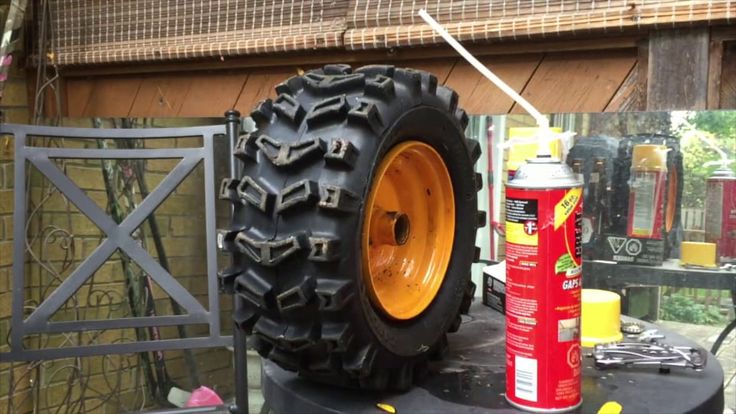
Use one wrench to hold the axle and another socket wrench to take off the lug nuts. If you can’t get a good grip with two hands, use your knee for leverage. Carefully lift the wheel, but set it down carefully; tires are under a lot of pressure! Then remove it from the car.
Step 3: Inflate the tire.To find the recommended tire pressure for your tire size, check the sidewall of your tire. If the pressure is marked as high, inflate the tire to the maximum psi rating on the sidewall. If the pressure is marked as low, deflate the tire until you can easily pull up a tread section to see the casing inside. Then, inflate the tire to around 30 psi, which should be enough to let you drive home without shredding your tires.
Step 4: Finish up.Put the wheel back on, tighten each lug nut by hand until it’s snug, then lower the car down with the jack and use a wrench to tighten the lugs with the vehicle in the air. Then pull them all in a criss-cross pattern, drive around for 10 minutes, then recheck tire pressure and retighten if necessary.
Then pull them all in a criss-cross pattern, drive around for 10 minutes, then recheck tire pressure and retighten if necessary.
1. Put a secure rubber band around the metal rim on the outside of the tire to help hold the tube in place.
2. Make sure the tire is washed off first to make it more visible if there are any holes in the tube.
3. If you have a bicycle pump, check your pressure gauge to see what PSI your tractor tire needs with the current amount of air in it before pumping any more into it. Then, pump that amount into it until the tire is hard enough.
4. If you don’t have a gauge, pump at least 20 times (count one second for each pump) and let it sit for about an hour before rechecking the pressure.
5. It’s unnecessary to fill up both tires if you only use your tractor once in a while.
6. If you have a tire on your car that is the same as on your tractor, you can use a compressor to blow up the tires without having to fill them both by hand with a bicycle pump.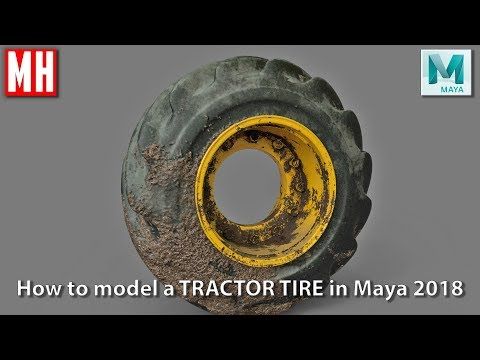
7. To prevent air leakage from your tires, seal them off from each other with rubber bands around where they touch.
Can You Fill Tractor Tires With Air?You can fill tractor tires with air by using an air compressor. However, if the tractor has a tubeless tire, you will need a sealant to inflate the tire properly. First, identify the valve stem on the tractor tire. This is the thin metal tube that sticks out of the tire.
To inflate the tractor tire, you will need to attach the air compressor hose to the valve stem. Turn on the air compressor once the hose is attached and wait for the tire to inflate. Monitor the inflation process to ensure that the tractor tire does not overinflate.
How Do You Inflate a Rear Tractor Tire?Inflating a tractor tire may seem daunting if you have never done it before, but it is quite simple. First, you will need an air compressor with a hose that can reach the desired tire, and you will also need to know the recommended air pressure for your tractor’s tires.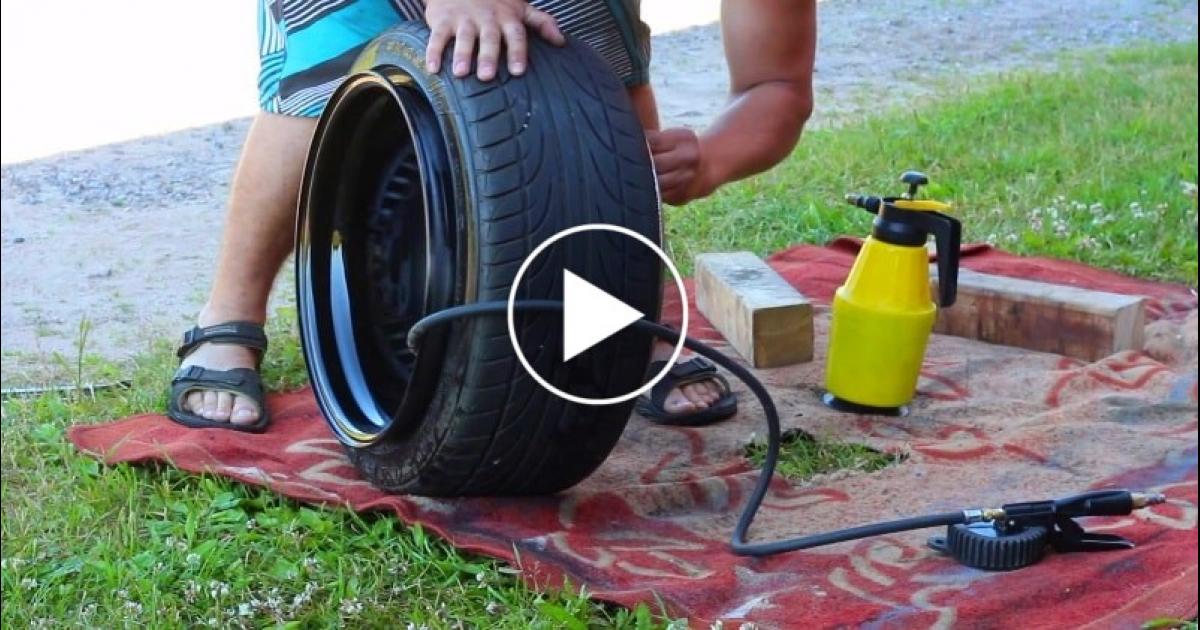 Once you have those things, follow these steps to inflate your tractor’s tires:
Once you have those things, follow these steps to inflate your tractor’s tires:
1. Park the tractor on a surface level, and ensure that the parking brake is engaged.
2. Remove the hubcap or wheel cover from the desired tire.
3. Connect the air compressor hose to the tire’s valve stem.
4. Turn on the compressor and slowly increase the pressure until the desired pressure is reached.
5. Replace the hubcap or wheel cover on the inflated tire.
6. Repeat the process for all other tractor tires.
The recommended air pressure for most tractor tires is around 30 PSI, but you should always check your owner’s manual to be sure. Also, remember that it is essential to maintain the correct air pressure in your tractor’s tires, as under-inflated or over-inflated tires can cause problems.
Tire fluid is a type of fluid that is used in tractor tires. It helps to prevent the tire from becoming flat and also keeps the wheel bearings lubricated.
Tractor tires are not supposed to have water in them. Tires are designed to hold air, and when they get wet, the water will seep inside the tire and cause it to lose air. This can lead to a flat tire, which can be very dangerous.
Can you put antifreeze in tractor tires?It depends on the type of antifreeze and the tractor tires. However, generally speaking, it is not recommended to put antifreeze in tractor tires as it can damage them and lead to decreased tire life.
Why are tractor tires filled with calcium?Tractor tires are filled with calcium to improve the traction and braking ability of the vehicle. Calcium is also a component of rubber, which helps to make the tire flexible and durable.
Conclusion:When it comes to inflating a tractor tire, you have many options. You can purchase an air compressor and use the power of your vehicle’s engine or generator for quick inflation in just minutes.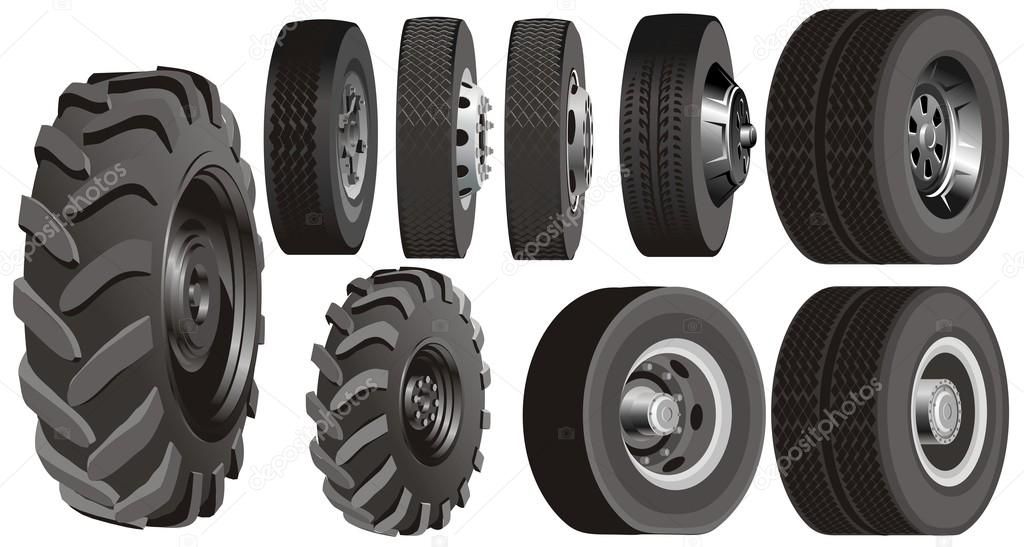 You can also inflate your tires with CO2 gas tanks for long-term storage without needing electricity.
You can also inflate your tires with CO2 gas tanks for long-term storage without needing electricity.
If neither of these is appealing, then you could always go old school by using a bicycle pump if that is what you’ve got handy! Lastly, portable compressor pumps take up very little space but need access to AC outlets. We hope this blog post on how to inflate a tractor tire has been helpful. Let us know your thoughts!
Check out our article How to Make a Riding Lawn Mower Quieter
Working on special equipment, you often have to do maintenance yourself and check tire pressure - a mandatory procedure before each trip. Due to punctures, the tractor driver needs to know the rules for removing wheels and the features from the restoration, although many prefer to contact the service station or call the master in such cases. To avoid premature repairs, it is advisable to choose high-quality tires from a tractor, ordering them from trusted suppliers. VOTO products meet all standards, produce models for almost any technique.
To avoid premature repairs, it is advisable to choose high-quality tires from a tractor, ordering them from trusted suppliers. VOTO products meet all standards, produce models for almost any technique.
Tire inflation is a mandatory procedure that every tractor operator should know. It is required at least several times a year, and if the tractor is used for different jobs, then much more often. Often you have to lower the wheels during field work to pump them up to go to the asphalt. Experienced drivers are fluent in such skills and these actions take them only a few minutes.
Practically every tractor is provided with a reservoir, because pumping large wheels by hand is quite a long and laborious process. Usually on domestic models it is located to the right of the engine and it is not difficult to find it. Pre-air is pumped into the balloon, then sufficient pressure is created to inflate the tire itself.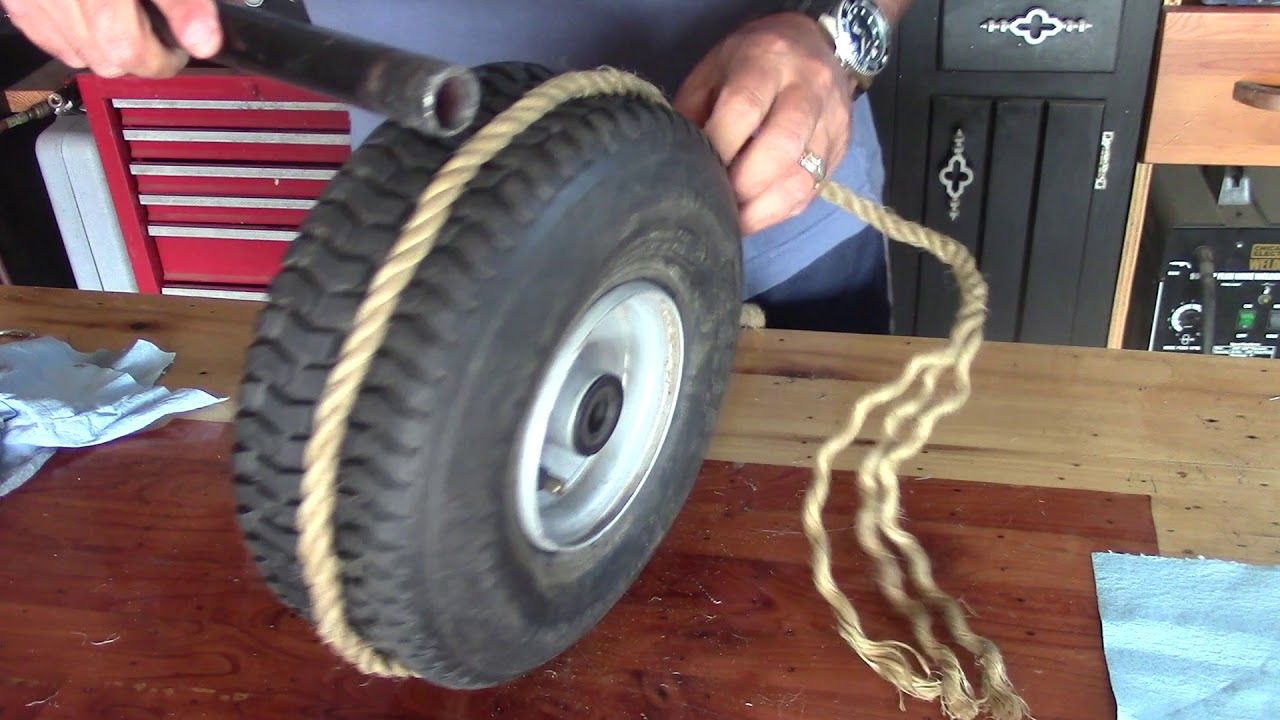
Another important point - the hose that comes from the receiver, it is advisable to immediately connect it to a gun equipped with a pressure gauge. So you can immediately control the pressure by inflating the tire to the desired values. To do this, the device has a trigger and a button to release excess air.
It is quite easy to inflate a tire with a standard receiver:
Modern models of priming guns are also equipped with a quick-release nipple tip with a lever, which can be quickly fixed and removed. Threaded models are outdated, but you can also work with them normally - for this they need to be quickly tightened and unscrewed, preventing a large volume of air from escaping. In the latter case, it is better to use a separate pressure gauge for control.
Threaded models are outdated, but you can also work with them normally - for this they need to be quickly tightened and unscrewed, preventing a large volume of air from escaping. In the latter case, it is better to use a separate pressure gauge for control.
If the standard receiver is broken or missing, for example, due to repair, you can use an electric compressor. You should choose large productive models that will cope with large tractor tires - preferably with a receiver from 50 liters and with two cylinders for swapping. To do this, carefully evaluate the technical characteristics of the model.
The operation is also easy:

The parameters are individual for each model, these values are indicated in the instruction manual. They can also be found on the inside of the doors, or from the side of the engine compartment. On average, for a hard surface, a pressure of 1.45 atmospheres is sufficient; when working on soft soils, the wheels are lowered to 1 atmosphere. Towing heavy equipment is carried out when the rear tires are inflated to 1.6 and the front tires to 2.5 atmospheres.
Share
Tractor wheels and tractor tires
The wheels transfer the weight load of the tractor body directly to the ground. Torque is supplied to the drive wheels from the engine. When these wheels interact with the supporting surface, the rotational movement of the wheels is converted into the translational movement of the tractor. The driven wheels, under the action of the pushing force of the frame, convert the translational movement of their axles into rotational (wheel rolling). As a rule, the driven wheels are steerable, they rotate relative to the frame.
The driven wheels, under the action of the pushing force of the frame, convert the translational movement of their axles into rotational (wheel rolling). As a rule, the driven wheels are steerable, they rotate relative to the frame.
Most wheeled tractors have larger rear wheels than front wheels. This is caused by a greater load on the driving wheels (approximately 70 ... 75% of the total mass) of tractors with a 4 x 2 wheel arrangement. On 4 × 4 wheeled tractors, they strive for a more even distribution of the tractor mass over the wheels, and therefore the dimensions of the front and rear wheels many of these tractors (for example, T-150K, K-701) are the same.
The wheel consists of two main parts: an inner rigid part and an outer elastic part.
The rigid part of the wheel is the hub, disc and rim. An elastic pneumatic tire is installed on the rim, into the inner cavity of which air is pumped.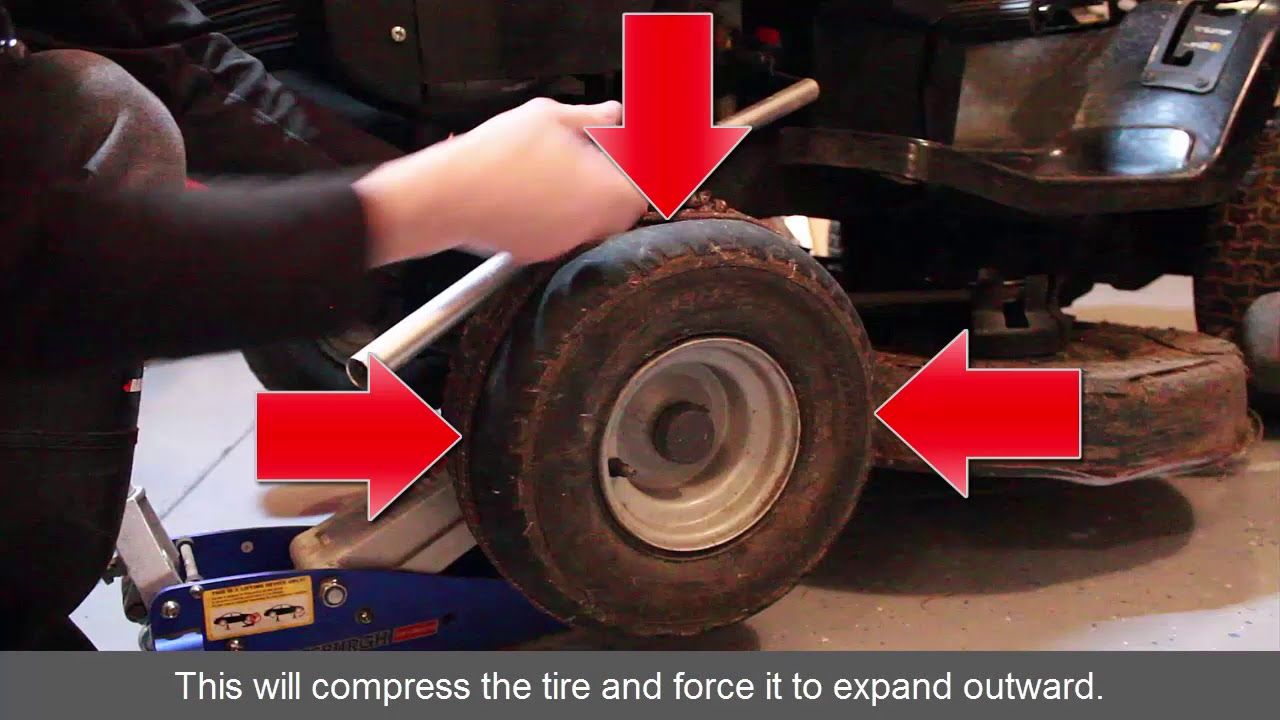
The hub (Fig. 1, a) of the driving wheel of the tractor is rigidly attached to the ends of the axle shafts protruding from the frame. Such fastening provides for the possibility of a relatively easy change of the fastening point along the length of the semi-axis. The hub (Fig. 1, b) of the steered wheel is mounted on two tapered bearings on a non-rotating pivot pin. The wheel is fixed on the trunnion with a nut. The wheel bearings are adjusted with the same nut.
Fig. 1. Tractor wheels: a - leading; b - controlled; 1 - hub; 2 - disk; 3 - rim; 4 - pneumatic tire assembly; 5 - axle shaft; 6 - steering knuckle; 7 - trunnion; b - stuffing box; 9 - bearings; 10 - nut; 11 - cap; 12 - easily removable weights
Additional easily removable weights can be attached to the disks of tractor wheels (Fig. 1, a).
Tractor wheel covers are deep. The deep rim has a high bead that securely holds the pneumatic tire.
The pneumatic tire is the elastic part of the wheel. The eye consists of a chamber, a rim tape and a tire (Fig. 2, a) or only one tire (Fig. 2, b).
The eye consists of a chamber, a rim tape and a tire (Fig. 2, a) or only one tire (Fig. 2, b).
The chamber is made of thin elastic rubber in the form of an o-ring. Air is pumped into the inner cavity of the chamber through a valve. When installing a pneumatic tire, the chamber is laid inside the tire, which protects the chamber from mechanical damage. To exclude mechanical effects of the steel rim on the chamber, an insulating rubber rim tape 8 is installed between the rim and the chamber.
The tire (Fig. 2, a) consists of a carcass ending with beads with metal wire rings, sidewalls, a cushion layer and a tread. The carcass is the basis of the tire, it consists of several layers of highly durable nordic fabric. Sidewalls are a relatively thin layer of rubber applied to the frame from the sides. The tire is held on the wheel rim by strong and sufficiently rigid sides. Metal wire rings in the beads increase the rigidity and strength of the tire.
The tread makes contact with the ground. The tread must be wear-resistant and ensure reliable grip of the wheel with the supporting surface. Therefore, it is a thick layer of rubber, the outer surface of which has protrusions. The sizes and configuration of these protrusions are very diverse. On off-road tractors, the protrusions are large, high, most often arranged in the form of a herringbone.
The tread must be wear-resistant and ensure reliable grip of the wheel with the supporting surface. Therefore, it is a thick layer of rubber, the outer surface of which has protrusions. The sizes and configuration of these protrusions are very diverse. On off-road tractors, the protrusions are large, high, most often arranged in the form of a herringbone.
The tread wears out most intensively in tires. When repairing tires, first of all, the tread is restored by building up a new layer of rubber and molding a pattern on it.
The air pressure in the tires of the steering wheels of tractors is 0.10...0.27, the driving wheels - 0.08...0.20 MPa.
Fig. 2. Pneumatic tires: a - chamber on a flat rim; b - tubeless on a deep rim; 1 and 6 - sides; 2 - frame; 3 - sidewall; 4 - cushion layer; 6 - protector; 7 - camera; 8 - rim tape; 9 and 10 - retaining rings
Fig. 3. Main dimensions of pneumatic tire
When servicing the tractor, check the condition of the tires, the air pressure in them and the tightness of the wheel nuts.